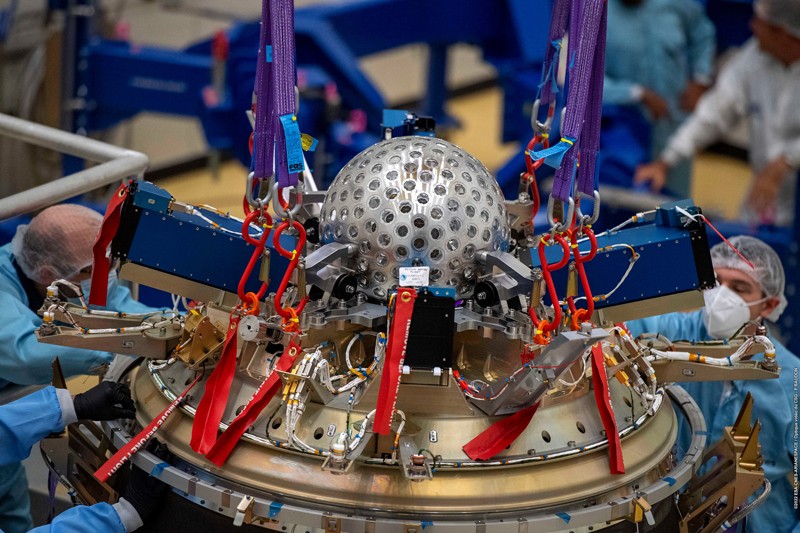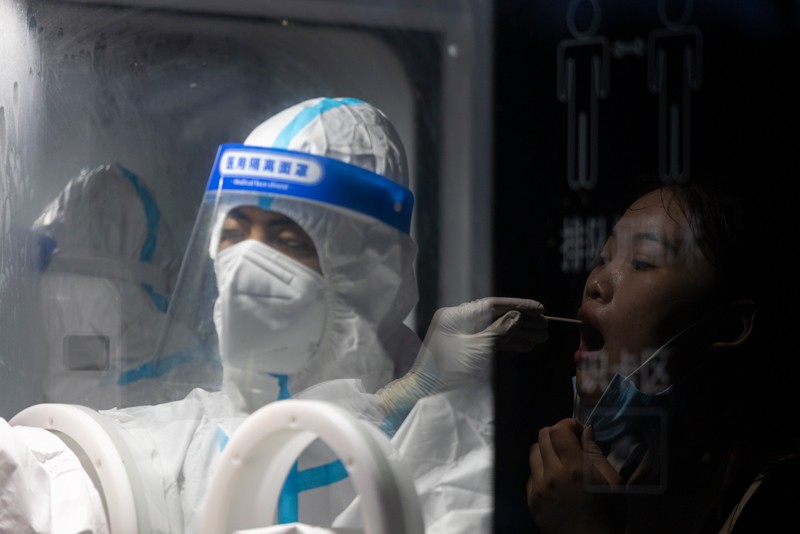Mild-COVID drugs, Omicron protection and disco-ball satellite

Disco-ball satellite will put Einstein’s theory to its toughest test yet
A newly launched satellite aims to measure how Earth’s rotation drags the fabric of space-time around itself — an effect of Einstein’s general theory of relativity — ten times more accurately than ever before.
The Laser Relativity Satellite 2 (LARES-2) was built by the Italian Space Agency and launched from the European Space Agency spaceport in Kourou, French Guiana, on 13 July on the maiden flight of an upgraded version of the European Vega rocket, called Vega C.
LARES-2’s structure is disarmingly simple: it is a metal sphere covered with 303 reflectors, with no on-board electronics or navigation control. The satellite packs around 295 kilograms of material into a sphere less than 50 centimetres across. Its density minimizes the effects of phenomena such as radiation pressure from sunlight or the feeble drag from Earth’s atmosphere.
Using an existing global network of laser-ranging stations, researchers will track its orbit for years. Their aim is to measure the magnitude of a relativistic effect called frame dragging, whereby the orbit of a satellite around a rotating planet is distorted by the effect of that planet’s rotation on the surrounding space. The effect is small: calculations predict that frame dragging should make the plane of the satellite’s orbit precess, or rotate, around Earth’s axis by 8.6-millionths of a degree per year.
LARES-2’s disco-ball-like design is similar to that of its predecessor LARES, which launched in 2012 and was able to measure frame dragging with an accuracy of 2%. LARES-2 aims to improve on that result by orbiting at a higher altitude, where the irregularities of Earth’s gravitational field are dampened but the effect of frame dragging is still strong.
“This is a great step forward for measuring this effect,” says Clifford Will, a theoretical physicist at the University of Florida in Gainesville.
The mission aims to get to 0.2% accuracy, which could enable astronomers to tell whether general relativity wins over alternative theories of space-time.
Scientists begin hunt for drugs to treat mild COVID
Some researchers are turning their attention towards drugs that could be used to treat mild COVID-19, even in people at low risk of severe disease.
Such drugs could fill a yawning gap, says infectious-disease expert Oriol Mitjà at Germans Trias i Pujol University Hospital in Barcelona, Spain. High-risk individuals have treatment options, he says, but people who don’t qualify for existing treatments fear for their safety. Treatments could reduce the disruption that even mild cases can inflict on people’s jobs and family lives. Such drugs could also limit disease spread, which in turn gives the virus fewer opportunities to mutate.
Among the efforts to find such treatments is the ACTIV-6 clinical trial, which studies whether existing drugs can help people to get through COVID-19. The researchers consider whether therapies resolve recipients’ symptoms sooner, rather than limiting the analysis to prevention of hospitalization or death.
Other researchers are investigating modified sugars called iminosugars. Iminosugars gum up host-cell machinery that the virus needs, disrupting the formation of viral particles. Scientists say these molecules could limit the course of the disease, as well as viral reproduction and spread, without spurring viral resistance.
Omicron infection protects against BA.4 and BA.5
The Omicron BA.4 and BA.5 subvariants of SARS-CoV-2 have proved to be stealthier at evading people’s immune defences than all of their predecessors.
But recent research shows that previous infection with an older variant (such as Alpha, Beta or Delta) offers some protection against reinfection with BA.4 or BA.5, and that protection following a previous Omicron infection is substantially more effective (H. N. Altarawneh et al. Preprint at medRxiv https://doi.org/h6v6; 2022).
To see how much protection previous infection offers against the two Omicron subvariants, researchers analysed COVID-19 cases recorded in Qatar between 7 May this year — when BA.4 and BA.5 first entered the country — and 4 July. They looked at the number of people known to have been infected previously who tested positive or negative for COVID-19, and identified which infections were caused by BA.4 or BA.5 by examining positive test samples to see whether they contained a specific gene mutation.
The researchers found that infection with a pre-Omicron variant prevented reinfection with BA.4 or BA.5 with an effectiveness of 28.3%. Previous infection with Omicron granted stronger protection: it was 79.7% effective at preventing BA.4 or BA.5 reinfection.
The work feeds into broader research on “how different immunities combine with each other”, says study co-author Laith Abu-Raddad, an infectious-disease epidemiologist at Weill Cornell Medicine–Qatar in Doha.




